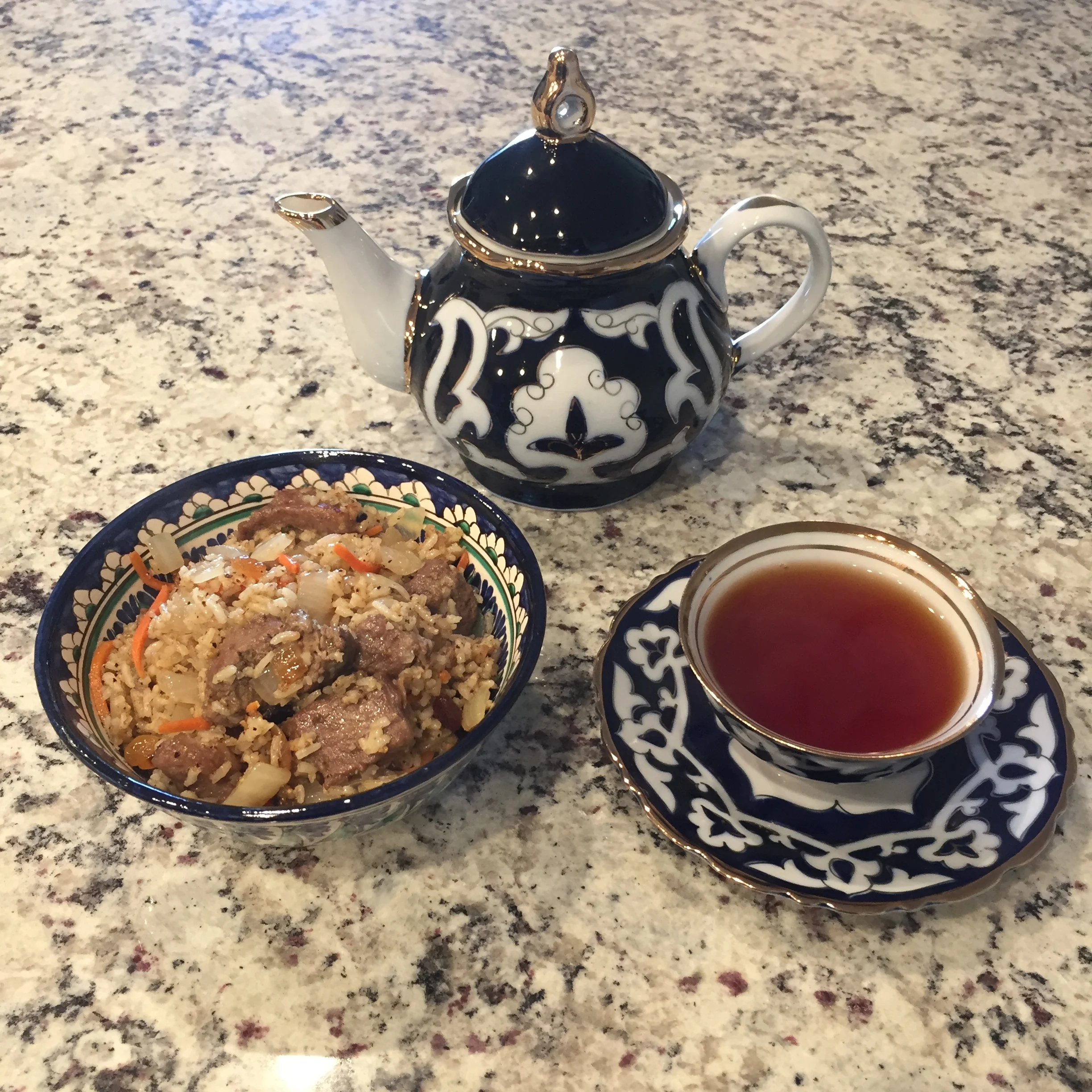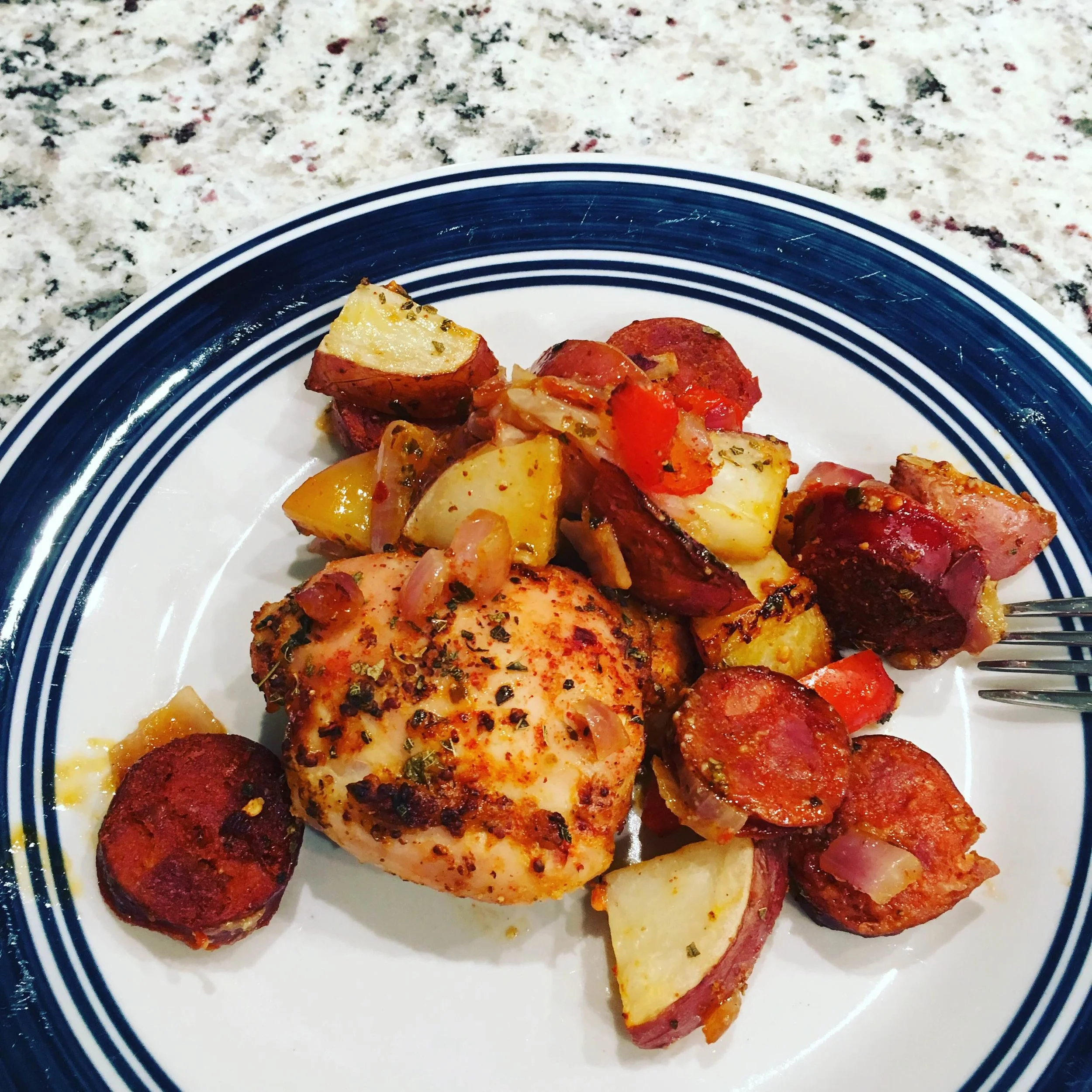Uzbek Palov (C Guest Post+Travel Memory+Recipe)
Two summers ago, C went on an adventure to Uzbekistan with a dear friend. His time there spent exploring, eating, and meeting the locals was one of his most memorable trips. When he came home he couldn’t stop talking about how wonderful his experience was. He also couldn’t stop talking about this one delicious dish he had there called palov. I invited him to make a guest post here:
C in Uzbekistan
The gates of the Ichan Qalʼa in Xiva
Looking down on the Ichan Qalʼa from one of the highest minarets in Xiva
I arrived in the Silk Road city of Xiva shortly before lunchtime. I had flown from Toshkent to Urganch early that morning and hitched a ride from there to Xiva with an elderly, talkative Uzbek man who drove a Lada, a Soviet car produced in the 1970’s. Xiva is the historical capital of the Xorazm region; the old citadel, the Ichan Qalʼa, was the seat of the Khans of Xiva for almost 500 years. After checking into my hotel, I went out looking for Uzbek food. I found a small restaurant just outside the walls of the Ichan Qalʼa and ordered myself a serving of palov, the national dish of Uzbekistan. If you like rice, meat, onions, and cumin, then Uzbekistan is the country for you! Served with green tea (yashil choy) in the summer and black tea (qora choy) in the winter, palov can be eaten for breakfast, lunch, or dinner—and especially at family celebrations like weddings. It can be cooked in truly massive quantities, sometimes for as many as 1,000 people, or in much more reasonable quantities. This recipe, my best attempt at imitating the genuine article, serves about four people—although this is a food that’s easy to overeat!
Real Uzbek palov in Xiva, served with manti (the dumplings), yashil choy (in the same cottonflower pattern china, known as paxta), the local bread (known as obi non), and Coca-Cola
Ingredients:
2 cups long-grain white rice
1/2 cup cumin
1/4 cup coriander
1/4 cup ground anise seed
Dash of salt and ground cayenne pepper
2 pounds lamb
Olive Oil
2 large white onions
5 cloves of garlic
Large handful of shredded carrots
Large handful of red raisins
Large handful of yellow raisins (sultanas)
Cooking:
The first step is to whip up the spice mix; you’ll need about half a cup of it. It should be about half cumin, a quarter coriander, and a quarter ground anise seed (I grind it myself for maximum freshness). On top of that, add a tiny bit of salt and ground cayenne pepper.
Next, cook about two cups of long-grain white rice. I use my Zojirushi computerized rice cooker from Japan, which is a) inauthentic and b) much better than I could do on a stovetop. While the rice is cooking, debone about two pounds of lamb* (the cut doesn’t matter all that much) and slice it into little cubes or strips. Use about a third of the spice mix and rub it on the lamb cubes. Cook the cubes slowly on low heat in a pan with 1/8 inch of olive oil until they are medium-rare. Keep the pan covered, because you want the lamb to stay moist.
Spiced lamb cubes and diced white onions ready for cooking
Next, dice up two large white onions and sauté them in a wok (or similar pot) on medium-high heat with a generous amount of olive oil and a dash of salt and pepper until they begin to caramelize. One they start to turn a light golden-brown, add a large handful each of shredded carrots, red raisins, and yellow raisins (known to our British friends as “sultanas,” apparently) and stir-fry them with the onions until the carrots are soft and the raisins begin to puff up a bit**. Also crush and add five (yes, five!) large cloves of garlic.
The spice mix, crushed garlic, carrots, and raisins, ready for mixing.
Finally, add the cooked rice and the lamb (including all the grease from the pan, which an Uzbek grandmother in Samarqand told me is an aphrodisiac). Sprinkle in the rest of the spice mix and stir until all the ingredients are mixed well. You’ll know it’s sufficiently mixed when all the white rice has turned brown from the lamb grease. Lower the heat on the wok and continue to stir periodically for about 10-15 minutes. For a maximally Uzbek experience, serve with tea, slices of melon, and yogurt.
* If you don’t like lamb (or red meat in general), you can substitute two pounds of chicken breast. Chicken palov (tovuq palov), is a specialty of Buxoro, another Silk Road city.
** I am allergic to legumes, but if you’re not, you can also add a handful of chickpeas.












